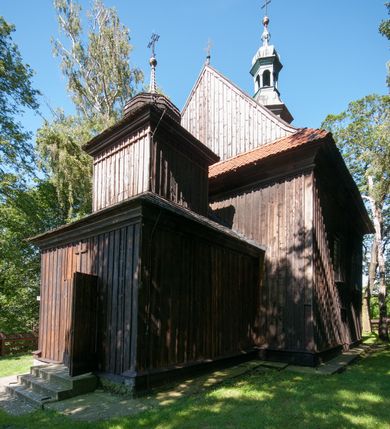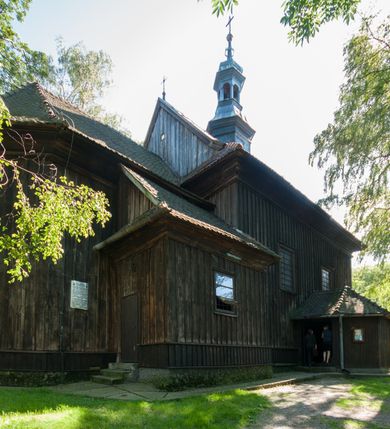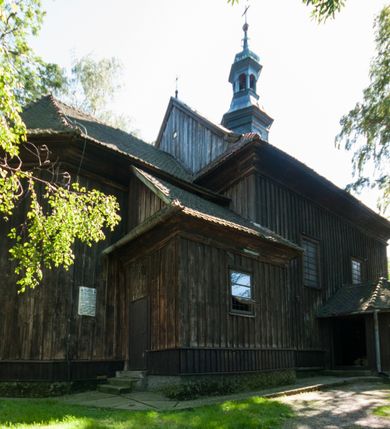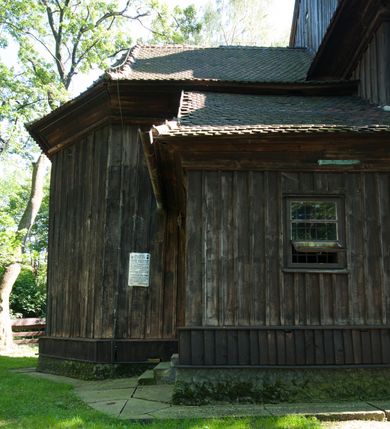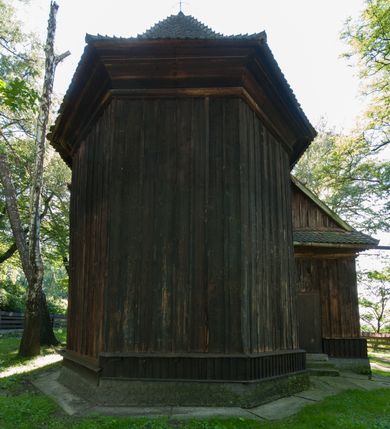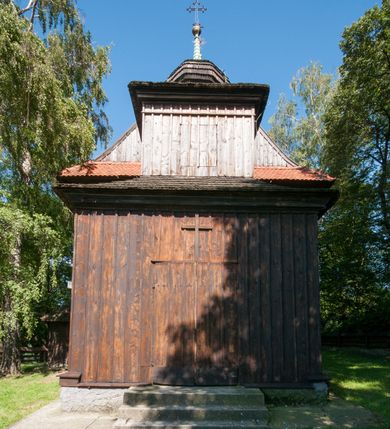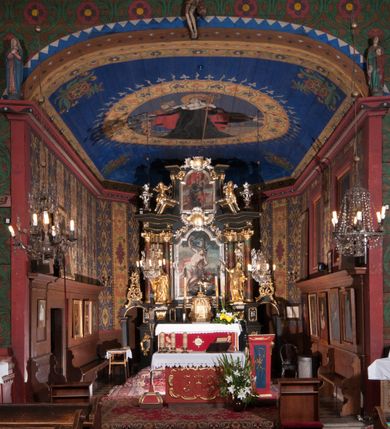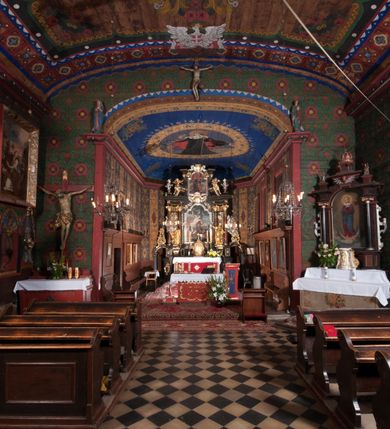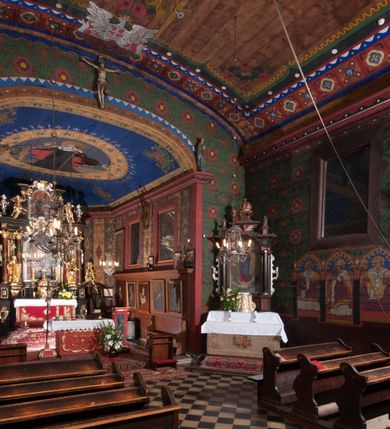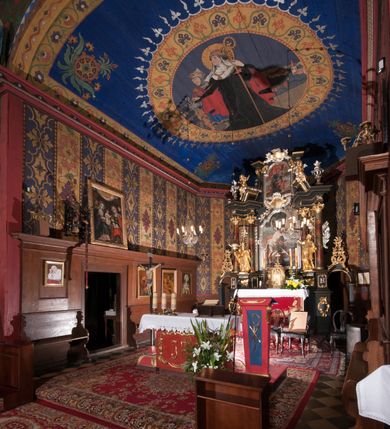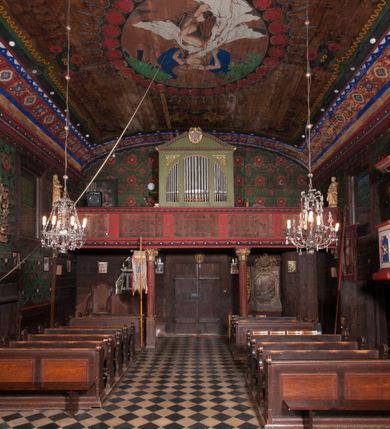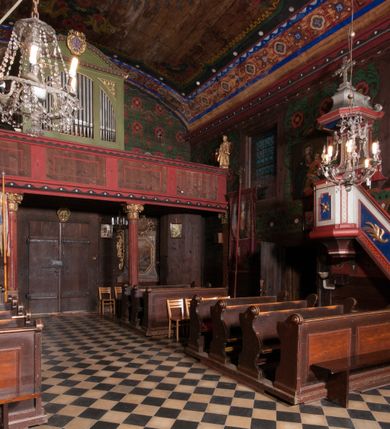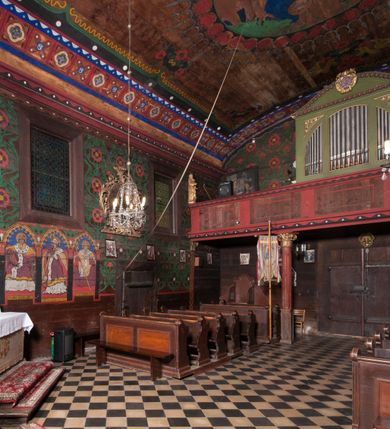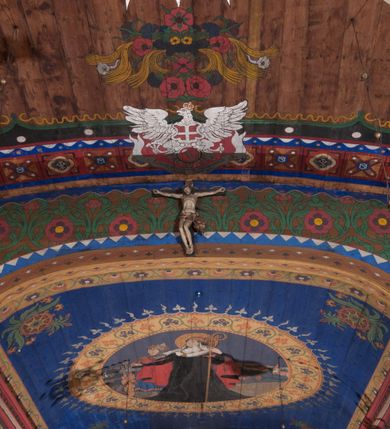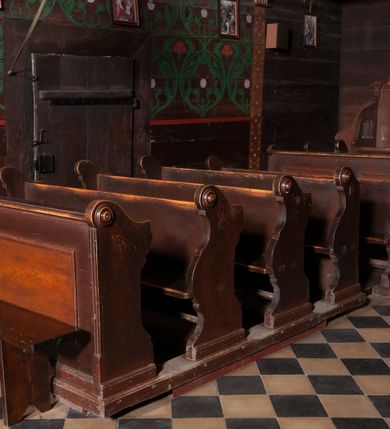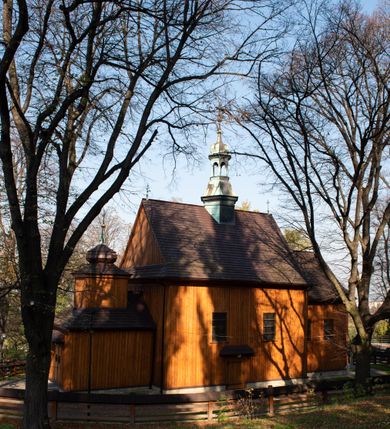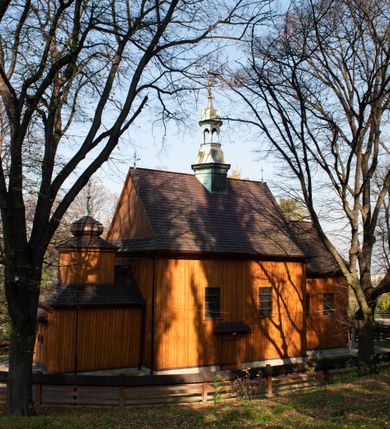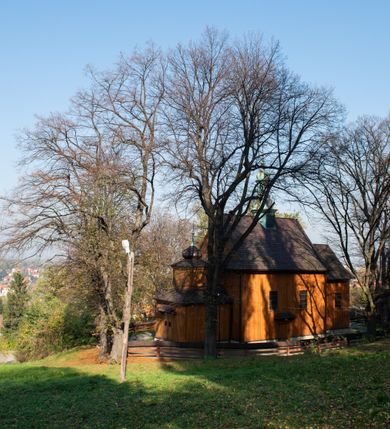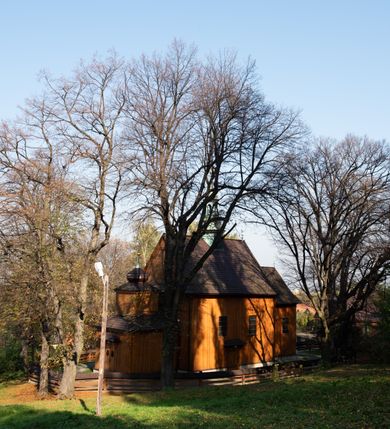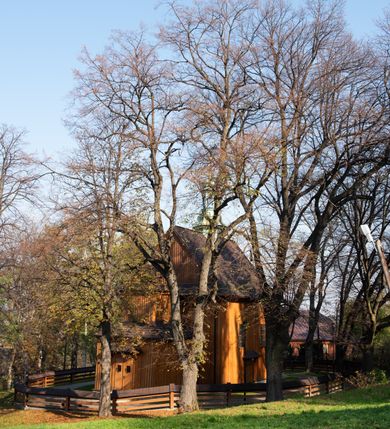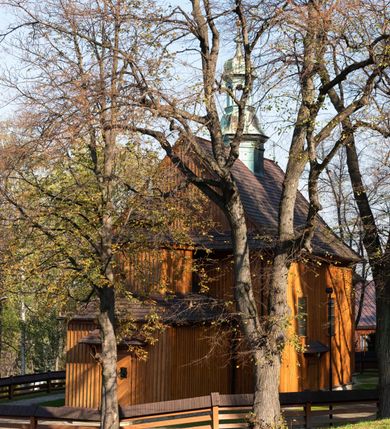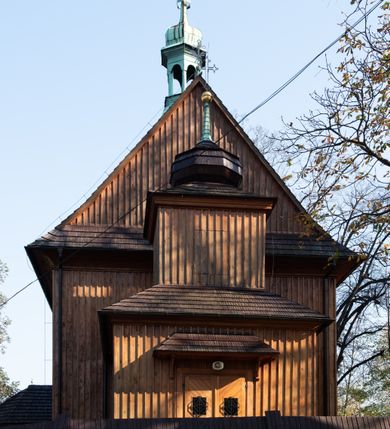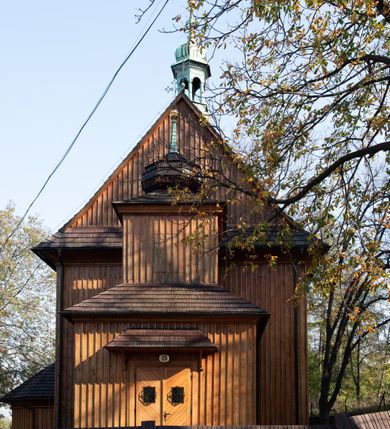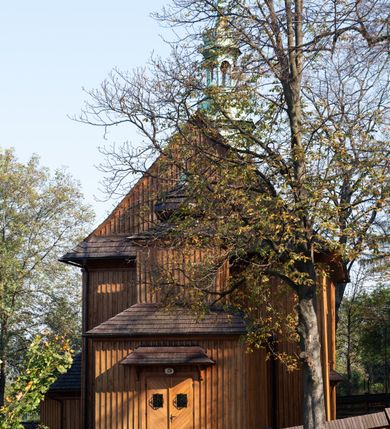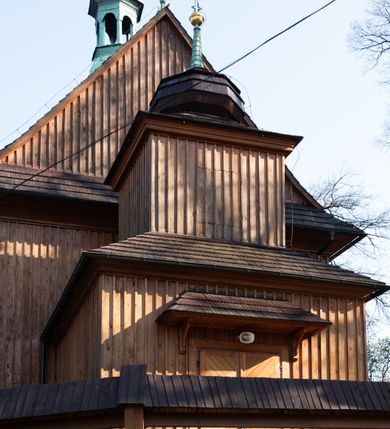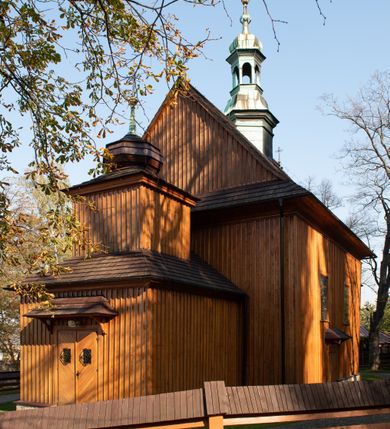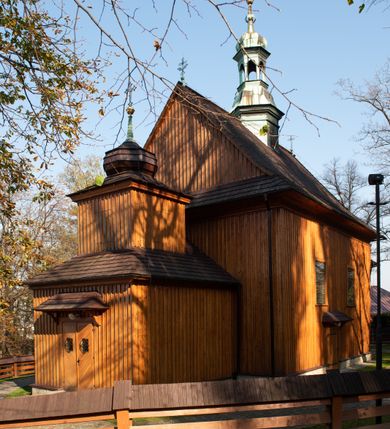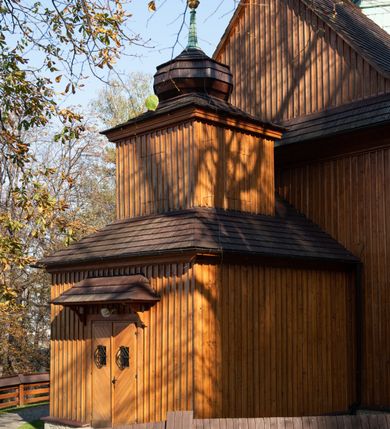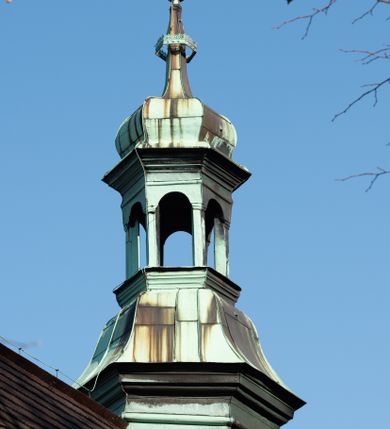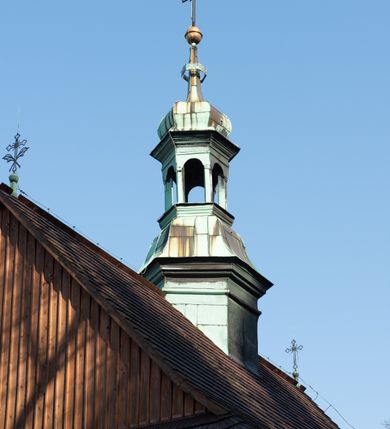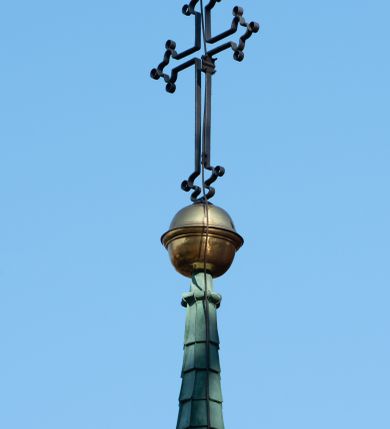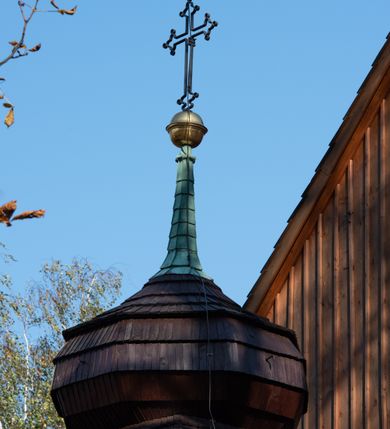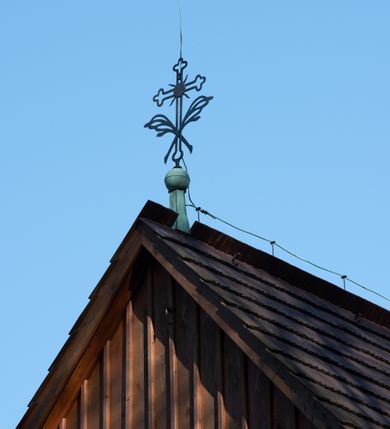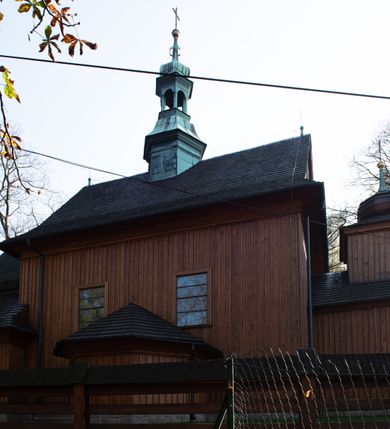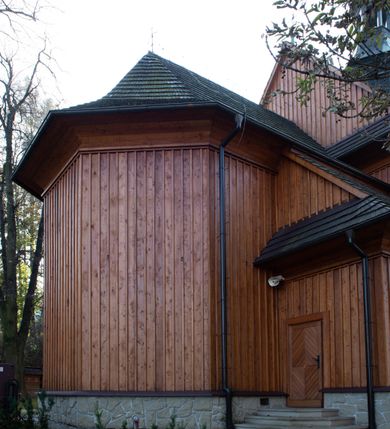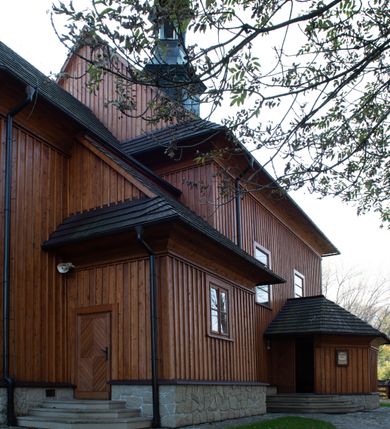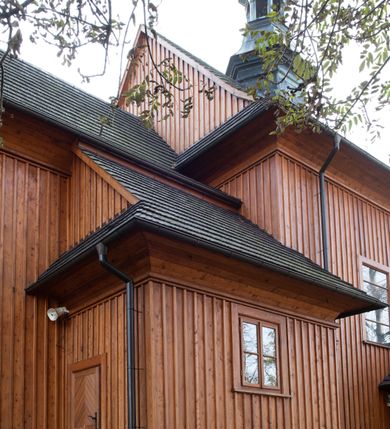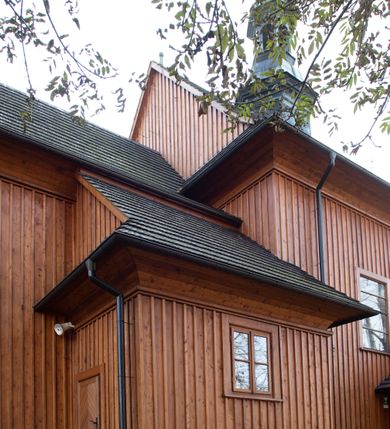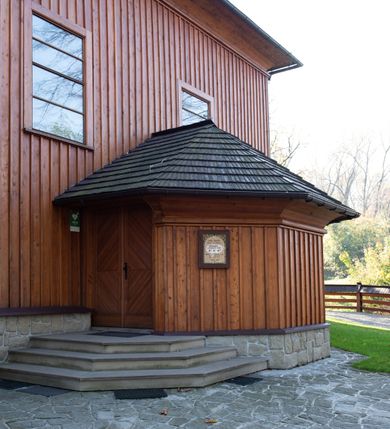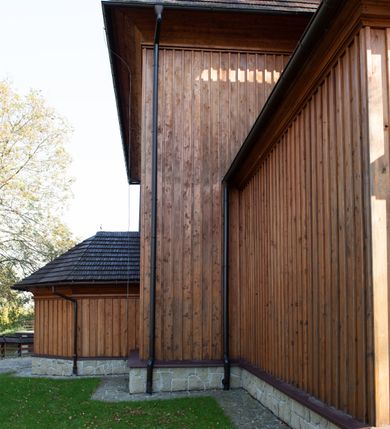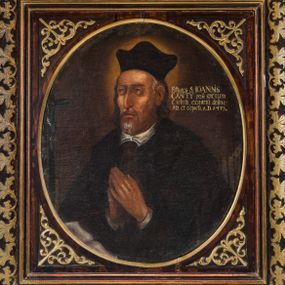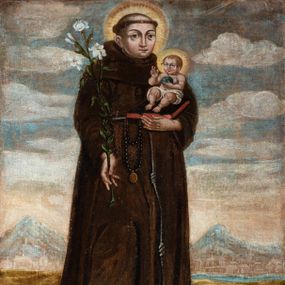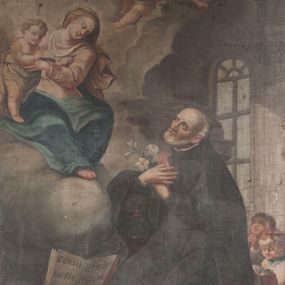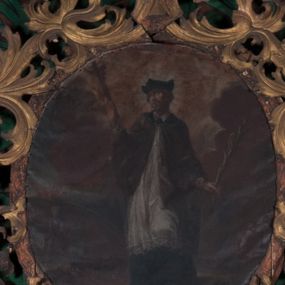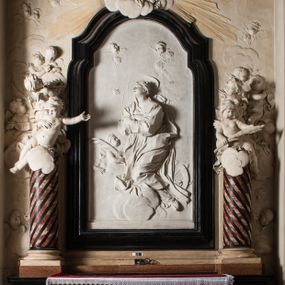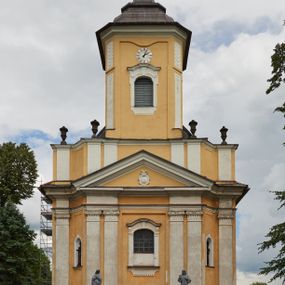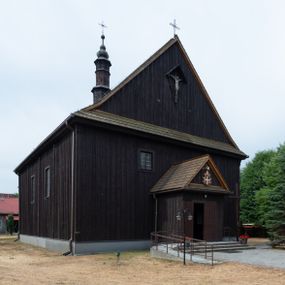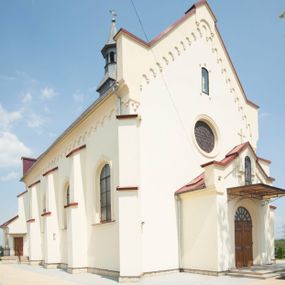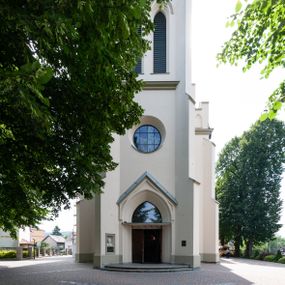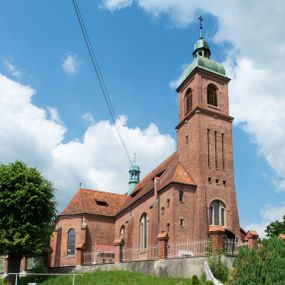
St. Sebastian's Church
Identifier
DZIELO/14489
Amount
1
Catalogue note author
Paulina Kluz
History of work
The chapel of St. Sebastian was built in the village of Lednica Górna, near Wieliczka (currently the suburbs), as a branch of the parish of St. Clement in Wieliczka. Work on it began in 1581 on the initiative of Father Maciej Blandowski, the parish priest and the owner of the village of Lednica. The construction works were completed thanks to Sebastian Lubomirski, who was the owner of the salt mine in 1581-1592, and the later owner of Lednica. The chapel was consecrated on 29 June 1598 by cardinal Jerzy Radziwiłł.
It is accepted that the chapel of St. Sebastian was built as a votive one, after the end of the plague in Wieliczka in the 16th century. That is why St. Sebastian was selected as its patron, protecting from plagues and infectious diseases. Perhaps the church's invocation was also connected with the figure of Sebastian Lubomirski.
In the records of the visitation from 1741 and 1748, "capella tituli S. Sebastiani” was described as entirely wooden and oriented, with three altars with brick mensas, two of which were patron's mensas and badly damaged. The consecrated portable altar from the high altar was transferred to the parish church together with other furnishings. The visitator pointed out that the temple was not properly prepared. Therefore, in the first half of the 18th century, it was in decline and probably unused.
Probably around the mid-18th century, on the initiative of Florian Lachowski, a professor at the Academy of Krakow and the then parish priest of the church of Saint Clement of Rome, the chapel of St. Sebastian was rebuilt and enlarged to form a small church, as evidenced by its Baroque shape and construction. First, the crypt below the chancel was probably built, dating back to the first half of the 18th century. During the renovation, the decayed walls were replaced and the chancel was rebuilt, thus being enclosed from three sides (earlier straight). Moreover, the sacristy and the western porch with a bell deck were added, and a new ridge turret was made. At that time new elements of the furnishings were made, namely before 1759 the high altar was built, and in 1777 the parishioners' contributions were used to build a new organ made by Father Eliasz Wykuszewski, a Cistercian from Jędrzejów, thanks to the efforts of the parish priest of Wieliczka, Father Jan Latkiewicz.
The Imperial and Royal Circular Committee put the church up for auction on 31 March 1797. It was sold to the town of Wieliczka for the sum of 271 zlotys (reński zloty) and 58.5 German coins (grajcar) which bought it in order to keep it in its present location. Throughout the 19th century the temple was in decline. After the church of Saint Clement of Rome was demolished in 1786, the temple of St. Sebastian was turned into a warehouse, where the furnishings and equipment from the first church were stored. In the 19th century, small repairs were carried out in the church, as evidenced by the addition of a polygonal porch on the northern wall of the nave of the church, the date "1849” on the cartouche of the high altar indicating its renovation and the inscription above the door inside the sacristy "Wojciech Liskiewicz, carpentry foreman, 18 October 1892". In the following years the church declined to such an extent that the town was considering its demolition.
On the 300th anniversary of the consecration of the church, it was decided that the church would be saved. For this purpose, in 1903, professor Ludwik Mlynek established the "Committee for the Care of the Church of St. Sebastian in Wieliczka", whose members were Adolf Scheuring (district clerk), Antoni Jaglarz (church guardian), Michał Łuszczkiewicz (advocate and deputy mayor), Zygmunt Napoleon Miczyński (pharmacist and former mayor) and other townsmen. The Committee made efforts to raise funds for the general reconstruction of the church. Supervision over the reconstruction was entrusted to Sławomir Odrzywolski. Upon request of the architect, The Conservators Group of Western Galicia awarded several grants for the reconstruction of the church, which supported the fund for the renovation of the temple collected from various sources. At that time, many craftsmen also offered to carry out free of charge works in the church.
In 1903-1910 it was thoroughly renovated. In 1904, a brick underpinning was laid under the walls of the church, the sill plates were secured, the floor inside the nave was replaced, three pillars in the crypt under the chancel were rebuilt, a new floor was laid in the whole church, a new door was inserted. Then, the ridge turret and the church porch with a bell deck as well as the northern church porch were fully renovated ("the whole new porch"). In the first half of 1906, apparent copings were built in the nave and chancel using old boards. In the same year, two side altars were rebuilt, the wall above the loft was repaired and the northern wall was covered with new boards. Extensive work also started on the creation of a new polychrome in the church, which was made free of charge by Włodzimierz Tetmajer, with the help of Józef Mikulski, a painter from Wieliczka. During the renovation, on 29 September 1906, bishop Anatol Nowak consecrated the church. In 1907, at the request of the Reconstruction Committee, Stanisław Kuczkiewicz received financial support in the amount of 1000 crowns (korony) from the k.u.k. of the State Treasury in Lviv to renovate the roof truss and tile the roof of the church. Due to the exemplary attitude of citizens, whose initiative it was to renovate the church of St. Sebastian, Feliks Kopera applied for the payment of the existing grants to the committee and the payment of an additional amount of 200 crowns (korony) for the finishing of the church. The renovation was officially completed on 30 October 1910, which is when three new bells founded by Ludwik Widomski were consecrated. Nevertheless, in the following years, individual renovation works were still carried out. In 1911, the ridge turret was covered with a copper sheet. A year later, the painting of Our Lady of Immaculate Conception by Florian Cynk was purchased for the side altar and new stained-glass windows, designed by Stefan Matejko and made in the S.G. Żelenski's Stained Glass Workshop in Cracow, were mounted. The former organs were dismantled on 14 May 1914 and replaced with new ones, donated and made by the Rudolf Hess National Organ Supply Company from Lviv.
In 1910, a state secondary school was established in Wieliczka and a Realschule was inaugurated. The newly renovated temple of St. Sebastian was then used as the secondary school's church, where masses for young people were held. In 1937, the church was visited by the Provincial Conservator of Monuments, Jerzy Remer. Together with architect Henry Jasieński, he ordered to secure the church and applied for its inclusion in the national register of historic monuments, which was interrupted by the coming war. It was not until 1947 that the provincial conservator, Józef Dutkiewicz, recognised the church of St. Sebastian as a historic monument. In the following years, funds were sought for the restoration of the church, however, it did not take place.
After World War II, the patron and manager of the church was the commune of Wieliczka together with the Roman Catholic parish in Wieliczka. In 1969, the then parish priest of the church of Saint Clement of Rome purchased land with a house nearby the church of St. Sebastian to serve as a future home for the rector. In 1981, a personal rectorate was established and the church of St. Sebastian ceased to be a branch church of the parish of Saint Clement of Rome.
The next general renovation of the temple took place in 1996-1998 in connection with the celebration of the 400th anniversary of its consecration. On the initiative of the then rector of the church, Father Lucjan Łukaszewicz, a new electrical installation was made in the church. The sheet flashings were replaced, the western part of the roof and the part of the dome above the western porch were renovated. A fence was built around the church. The high altar and the most valuable paintings were also restored. To celebrate the 400th anniversary of the consecration of the church of St. Sebastian, a scientific conference and an exhibition on the history of the temple in Wieliczka were held.
In 2003, a "FOG" Fire Protection System was installed in the church. In 2009, the rector, Father Mateusz Ryś, began preparations for complex construction and restoration works, whose program was prepared by architects Andrzej Gaczoł and Bogusław Kulka. Construction began in 2011. The brick foundations of the temple were uncovered and secured. A drainage system around the church was made. The damaged sill plates (a base consisting of beams on which the wall rests) were inspected and replaced and all structural elements of the northern porch were replaced. In 2012, the tiles covering the church roof and the formwork of the building walls were removed, the damaged elements were replaced and the remaining ones secured. The formwork of the external walls was entirely replaced and the elements of the wooden cornice were reconstructed. Inspection of the roof truss took place, during which its parts were replaced, supplemented and secured. The shingle covering of the church was restored using insulation and the damaged shingle above the porch was replaced. Window and door frames were renovated and reconstructed and new entrance doors to both porches were made. In 2013, renovation works were carried out in the crypt and the electrical installation was replaced in the whole church.
The former rectoral church of St. Sebastian, which was part of the parish of St. Clement of Rome in Wieliczka, by decree of 20 November 2013 of The Metropolitan Archbishop of Krakow, Cardinal Stanisław Dziwisz, was raised to the rank of a parish church. The parish of St. Sebastian in Wieliczka was founded on 1 December 2013.
Abstract
The chapel of St. Sebastian was built in the village of Lednica Górna, near Wieliczka (currently the suburbs), as a branch of the parish of St. Clement in Wieliczka in the 1580s, consecrated in 1598. In the mid-18th century, it was thoroughly rebuilt and extended to a small church, as evidenced by its body and structure with baroque features. In 1797, the church was put up for auction and was purchased by the city of Wieliczka. In connection with the 300th anniversary of church's consecration, the intention was to save the degenerated temple and "Committee for Protection of the Church of St. Sebastian in Wieliczka" was established. In the years 1903-1910, the church underwent a major renovation, during which the polychrome of the interior was made by Włodzimierz Tetmajer. The church underwent subsequent restorations in 1996-1998 (on the occasion of the 400th anniversary of the church's consecration) and in 2011-2013.
The church had a permanent rectory since 1981, however, at the end of 2013, it has been raised to the status of a parish church.
Other works from this place
Other works from this year
Similar works
How to cite?
Paulina Kluz, "St. Sebastian's Church", [in:] "The Sacred Lesser Poland Heritage", 2026, source: https://sdm.upjp2.edu.pl/en/works/st-sebastians-church
